Off-grid in the suburbs
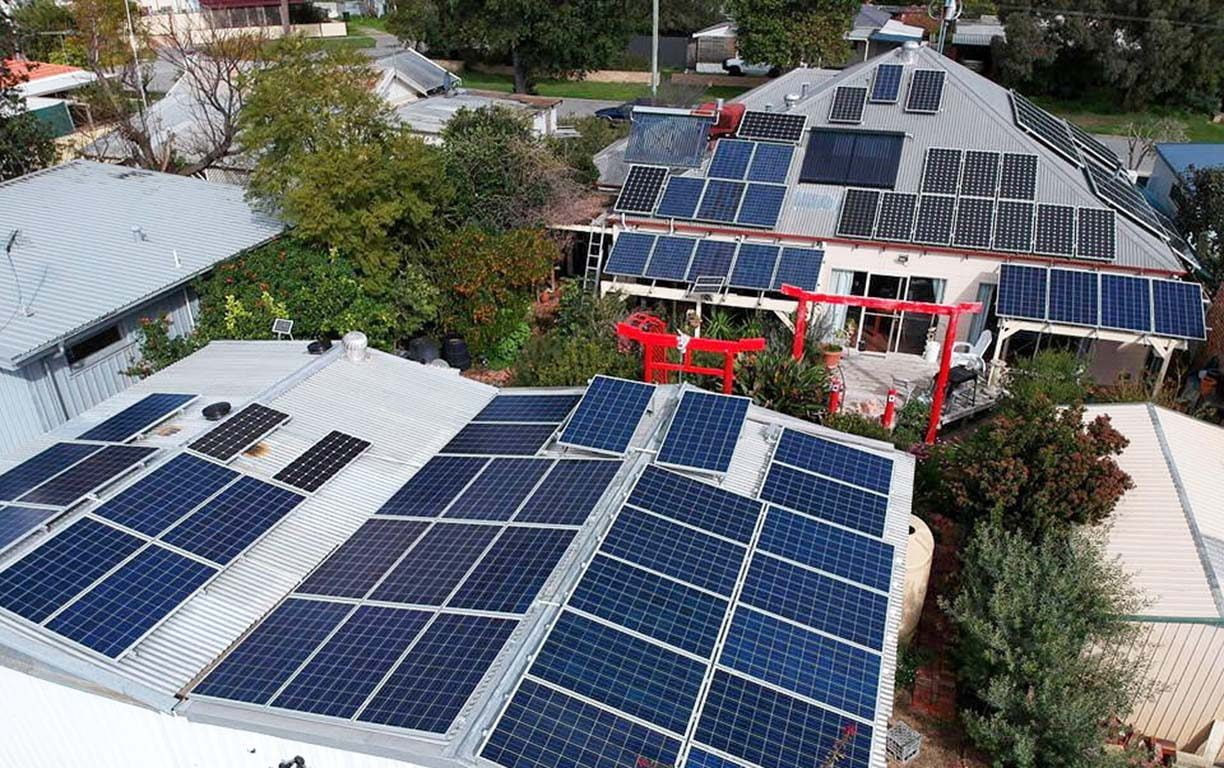
Martin Chape tells us about his experiment in taking a suburban house off the grid.
Back in 2011 I took the first tentative steps to taking my home off the grid. I detailed some of these in a number of Renew articles starting with issue 119.
Originally, I wired my house with separate 12 V lighting and used 12 V solar PV and a set of lead-acid batteries to power them.
In the following years I built a 12 V solar hot water system, a couple of 24 V solar-powered air coolers and a 24 V solar-powered hydronic room heating system.
Next, I set up an MPP Power PIP4048 5 kW off-grid inverter-charger in my garage connecting 3 kW of west-facing solar PV to 10 kWh of deep-cycle gel lead-acid batteries and had my electrician connect it to additional red power points around the house. This system still runs my fridge, computers and TVs.
In 2017 my mother passed away and I received some money from her estate. I decided this was my chance to invest properly in my home and truly go off-grid with a bigger system.
The new off-grid system
When I bought it, my block of land came with a large shed on the back boundary.
My new concept was to cover that shed roof in solar PV and install an off-grid system to power as many of my house loads as possible. A new switchboard would contain a changeover switch that would connect the house to either the shed’s solar system or the grid. This grid connection would provide a final backup if things went wrong and also allow my 10-year-old 3.5 kW solar system to continue exporting to the grid until the 40 cent feed-in tariff expires in a few years.
Choice of batteries
Looking for at least four days of autonomy and preferring to avoid a diesel start in the middle of the night, I calculated that I would need 20 kWh of battery (see Table 1) with a maximum load of around 6 kW.
Initially I looked at LG Chem RESU batteries, but I found that the 10 kWh unit was limited to a 5 kW load even if you daisy chain a few together. So instead I looked at a new entrant to the battery market, BYD. This large Chinese battery company entered the Australian domestic market in 2015 with a new battery cabinet that used 48 V lithium battery modules ‘tried and tested’ for telecommunications use. Each cabinet could accommodate from one to four battery modules, giving a capacity of 2.5 to 10 kWh. A BYD cabinet fully populated with four modules would allow me to draw 10 kW, easily covering my 6 kW requirement.
I decided to install two BYD cabinets for a total of 20 kWh storage and theoretically up to a 20 kW load. Cost per fully populated cabinet was $6500 making a $13,000 total outlay for batteries.
Solar collection
The 8.2 kW solar array on the shed consists of 255 W polycrystalline CSUN solar panels (each with an open circuit voltage of 37.5 V and short circuit current of 8.8 A) arranged in two strings, one facing east and one west. Each string was limited to 16 panels as the maximum voltage per string is 600 volts for domestic premises. This leaves me a little roof space for future projects! The solar inverter is an 8 kW Fronius Primo 8.2-1 string inverter.
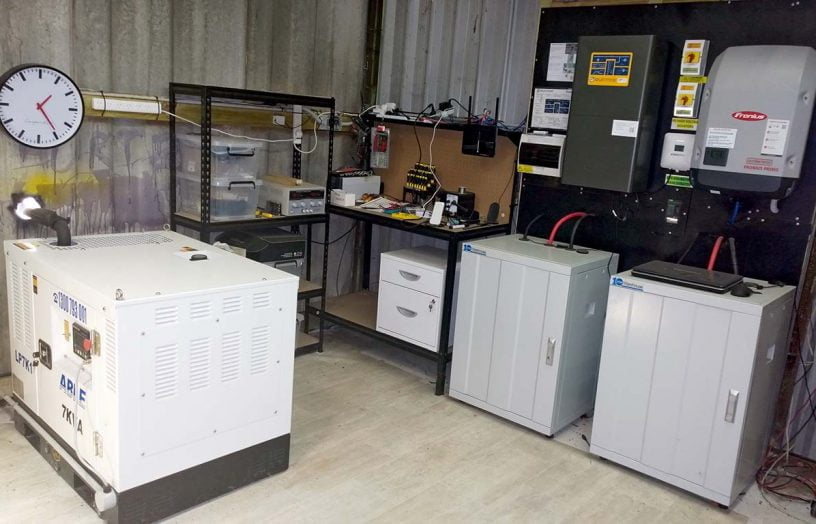
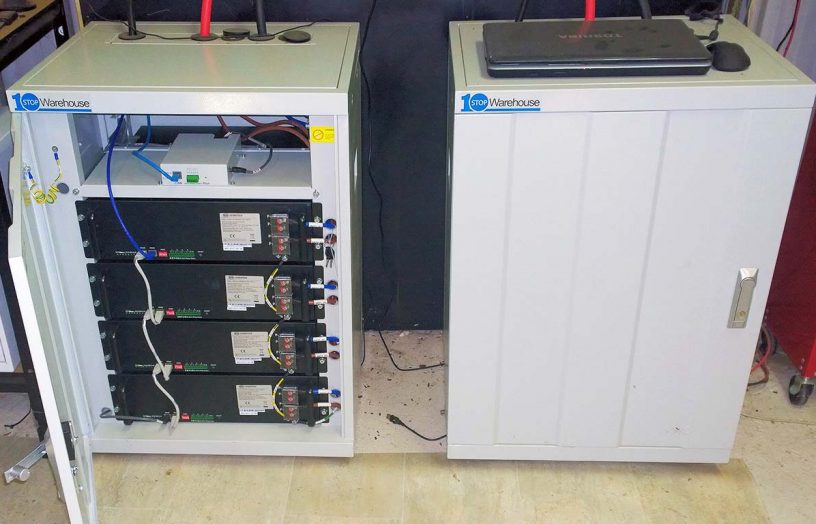
Control of the new system
The heart of the new off-grid system is a 7.5 kW Selectronic SP Pro inverter-charger. This manages the BYD battery cabinets and the Fronius solar inverter, and stops and starts the diesel generator set. The SP-Pro monitors the house loads and tells the Fronius inverter how much solar PV power to deliver to the house. The gen set is a 7 kVA Able unit, just large enough to cover my maximum load if everything in the house is turned on.
Selectronic’s SP-Link software allows installers and owners control over the system, from setting minimum state of charge (SoC) for the batteries through to exercising the diesel generator if it hasn’t been run for a while.
Selectronic also provides monitoring through an add-on hardware device and web portal called Select.live. Select.live enables you to graphically view your system’s operation from anywhere using a computer or mobile phone. It uses the ethernet port on the SP Pro and connects by wi-fi to your network.
Teething problems
I made a mistake when I took the cheapest quote for the Fronius inverter; I should have purchased the ‘Selectronic certified’ version so that it could talk to the Selectronic SP Pro to control its output. I had to repack my Fronius inverter and ship it to Melbourne
where Selectronic kindly agreed to ‘mod’ it. With shipping this cost me around $500. If you’re using an existing inverter, it’s good to know you can do this (it’s now on the Selectronic product list), but if you’re starting out new, make sure you purchase one that’s already ‘Selectronic certified’!
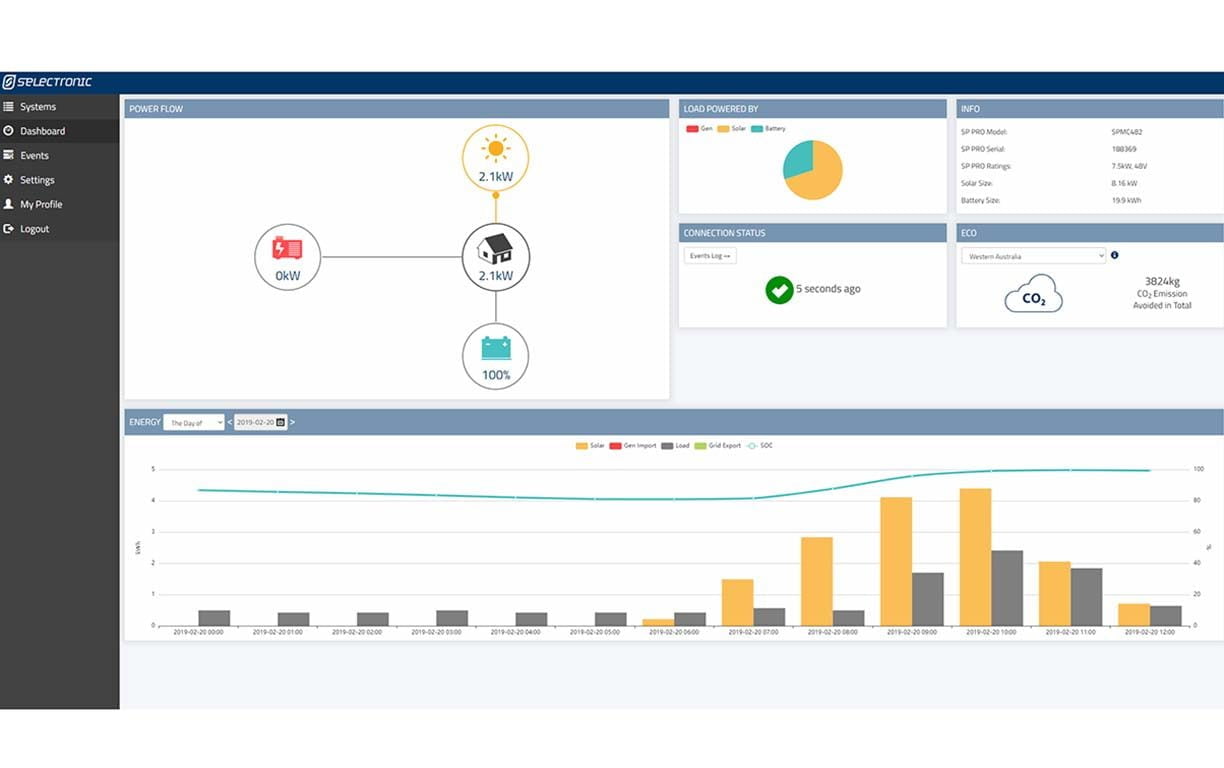
When I commissioned the system, it appeared to work fine, but then the SP Pro began starting the generator in the early hours of the morning, even though the batteries still had charge available. Inverter data showed that the BYD battery was falsely indicating to the SP Pro that the batteries had zero state of charge; it would do this for short periods of up to eight seconds. The Selectronic R&D team resolved the problem via a software workaround and the new version of the SP-Pro software now incorporates these changes. BYD has also provided a software update.
Working well
The new off-grid system has been functioning well since commissioning in February 2018.
When I write this, we are in the 40 °C heat of WA’s summer and the SP Pro is running up to five conventional air conditioners (including a Devanti 2 kW (output power) in-wall box unit, an old Fujitsu 2 kW split system, a fairly new Kelvinator 2 kW split system, a 3.5 kW Gree split system and a 2.5 kW Samsung split system), at one time, straight off the sun. With all five air conditioners turned on the house load shows 3.5 kW to 4 kW. I leave these turned on all day, even if I am not at home, as there is no further cost or grid impact to keeping my house at a cool 24 °C this way.
The system has also managed to supply all the other loads including pumps. The SP Pro, as distinct from many transformer-less inverters, can handle large surge currents from inductive loads such as pumps with ease.
Through the winter months even with several rainy days in a row the system managed to keep battery state of charge above 80% without needing to use the diesel gen set at all. This level of charge helps prolong the battery life. Battery manufacturers these days have moved away from counting battery cycles to how many watt-hours the battery will produce during its lifetime.
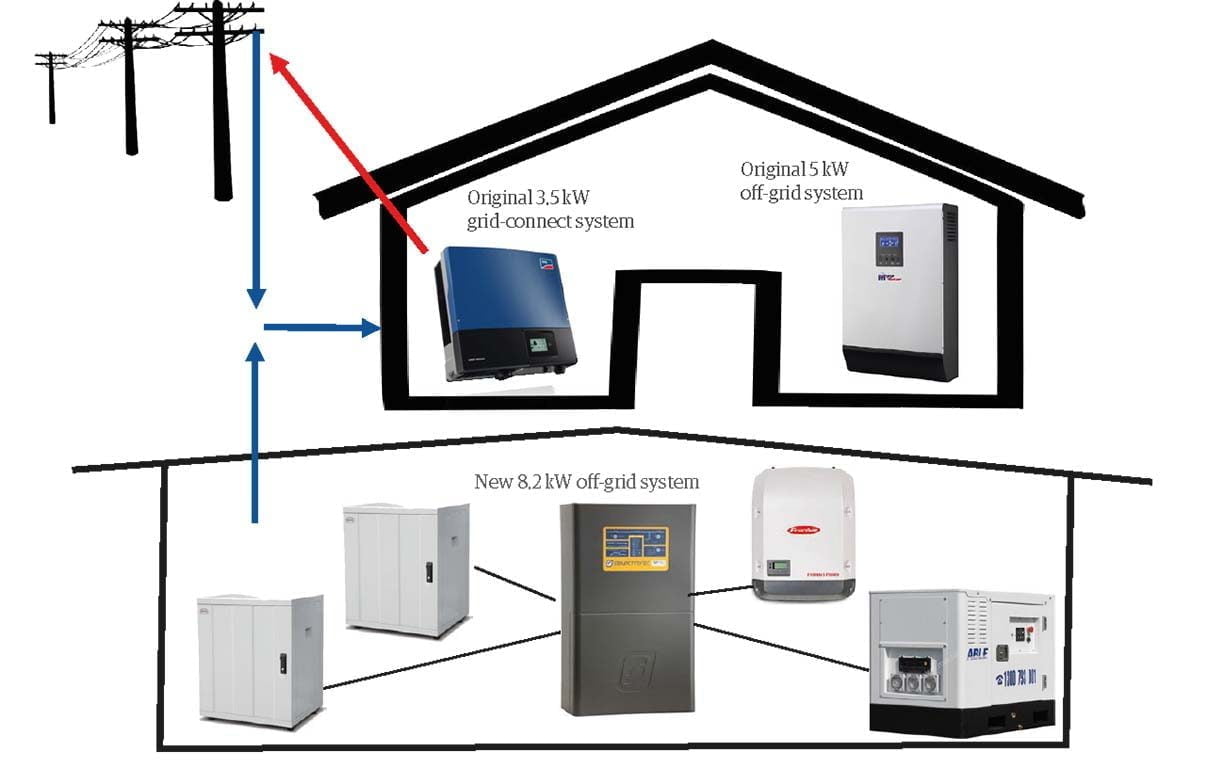
This new off-grid power system has made many of my earlier projects redundant. I intend to keep one of the solar coolers to demonstrate its design, but will retire the large solar cooler and the solar hydronic system.
| Table 1. Battery bank size calculation for four days autonomy in the Perth climate | |
|---|---|
| Average measured daily winter energy use (no air conditioners as heating not required in Perth) | 4 kWh |
| Total energy requirement from batteries over four winter days | 16 kWh |
| Desired minimum battery SoC after four winter days assuming zero charge (will depend on battery specifications) | 20% |
| Total battery size required for four winter days assuming zero charge (most winter days actually provide several kWh of charge) | 20 kWh |
Go hybrid instead
Would I recommend that others have a set up like this? Not in suburbia. I did this because I wanted to experiment with the system design. The system I built is better suited to a location without a grid connection.
If I were starting again where the grid is available, I would build a hybrid system that used the grid as backup instead of adding the cost of a noisy diesel. This would allow for both battery size and cost to be reduced. The system would merely perform a load shifting function. The grid would be used on rainy days or if storage was inadequate overnight. [Ed note: Remaining grid connected also has the advantage of feeding excess solar energy back into the grid.]
I would also use a heat pump hot water system instead of my solar hot water system. The Fronius inverter communications card can be simply programmed to switch on a heat-pump via a contactor when solar PV generation rises over a set amount. With the COP of many heat pumps heading for over 4 this would provide high efficiency storage from the solar PV. A 300 litre hot water tank provides the storage equivalent of a 15 kWh battery and is lower in cost.
If you choose a Selectronic SP Pro to control your system, it comes in a 7.5 kW and a smaller 5 kW version. Both can easily be set up in hybrid mode and continue to provide power during a grid outage.
There are a variety of solutions from different manufacturers out there for your future energy needs and what I have built with Selectronic/Fronius/BYD is only one example.
Before embarking on a journey to go off-grid or hybrid, I recommend you seek unbiased information to establish your requirements and to compare the possible solutions.
For me, I am happy to have eventually gone completely off-grid and I’m willing to offer any advice I can to anyone contemplating such a change.
Martin’s house will be open for viewings on Sustainable House Day, September 15 2019. Register to attend here.
Further reading
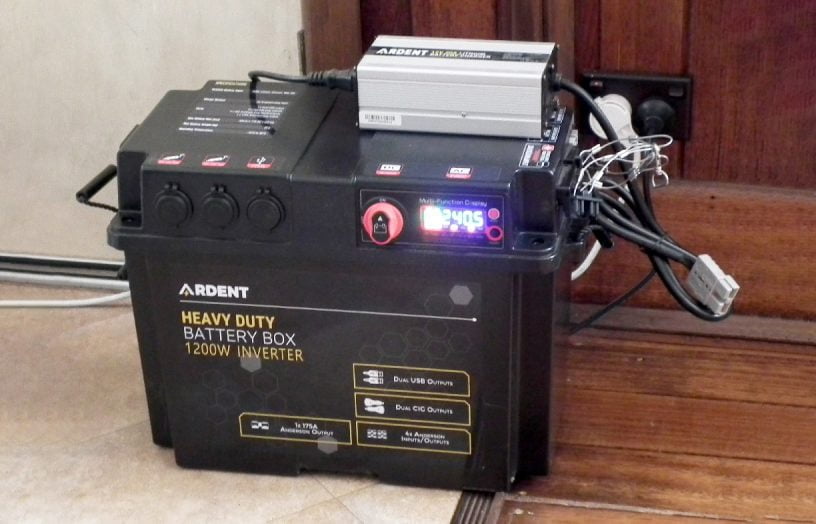 DIY
DIY
Deleting the genset
If you have the need for the occasional use of a generator, then why not replace it with a much cleaner battery backup system instead? Lance Turner explains how.
Read more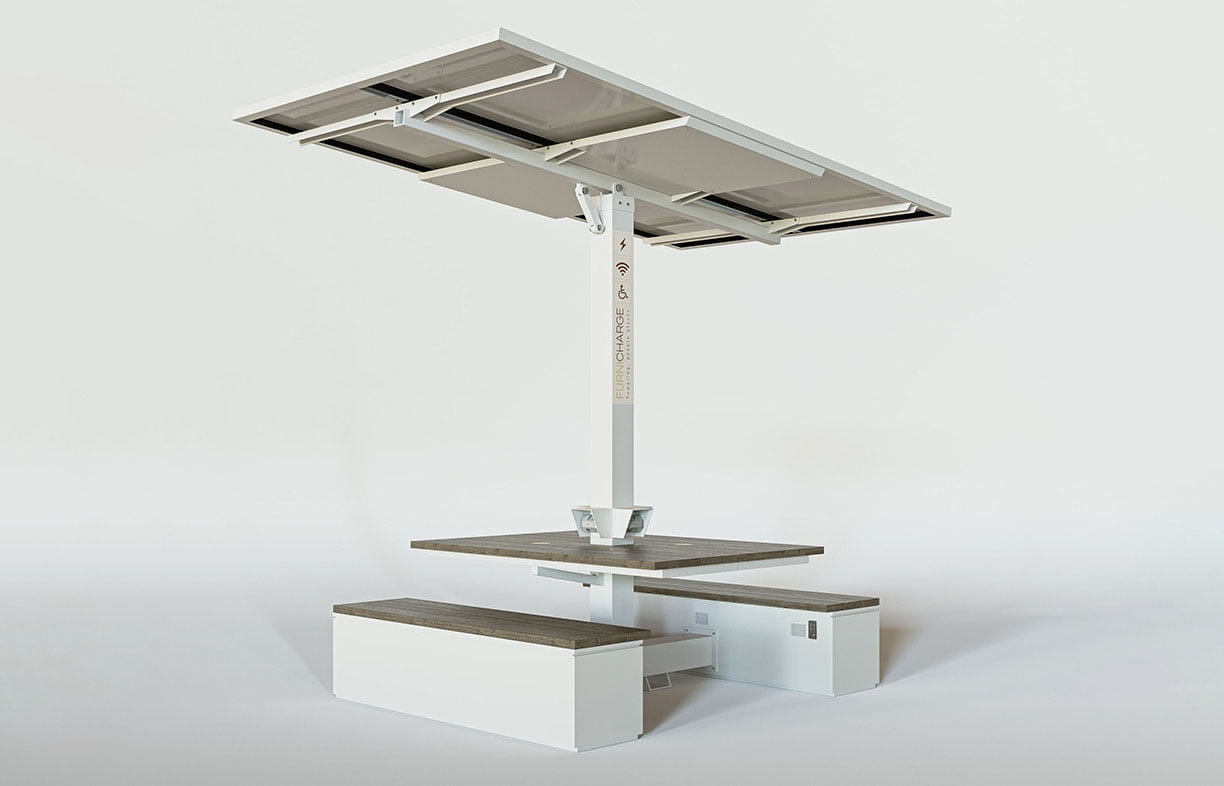 Products
Products
Product profile: Portable solar recharge hubs
Providing device recharging for events or outdoor areas with no access to electricity can be difficult, but the Furnicharge Freedom Hub makes it simple.
Read more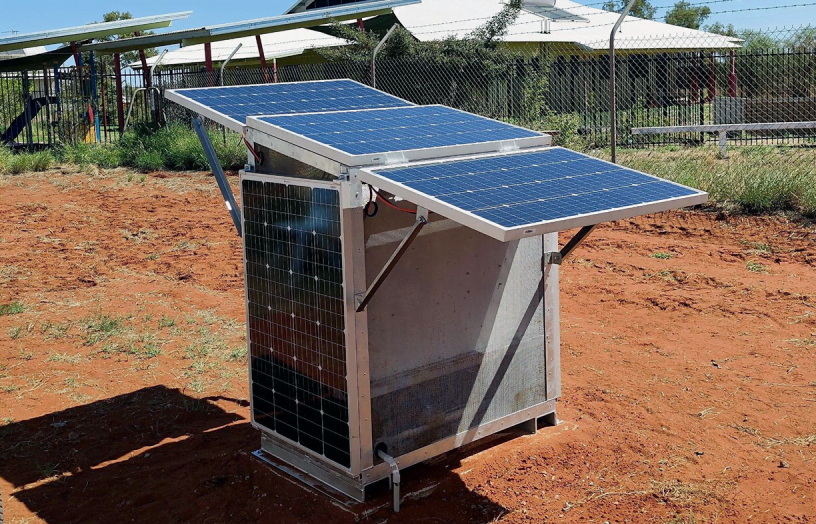 Products
Products
Product profile: Solar in a box
The SunPack comes as a pre-configured system, complete with battery, inverter and solar panels that you just swing into place.
Read more

